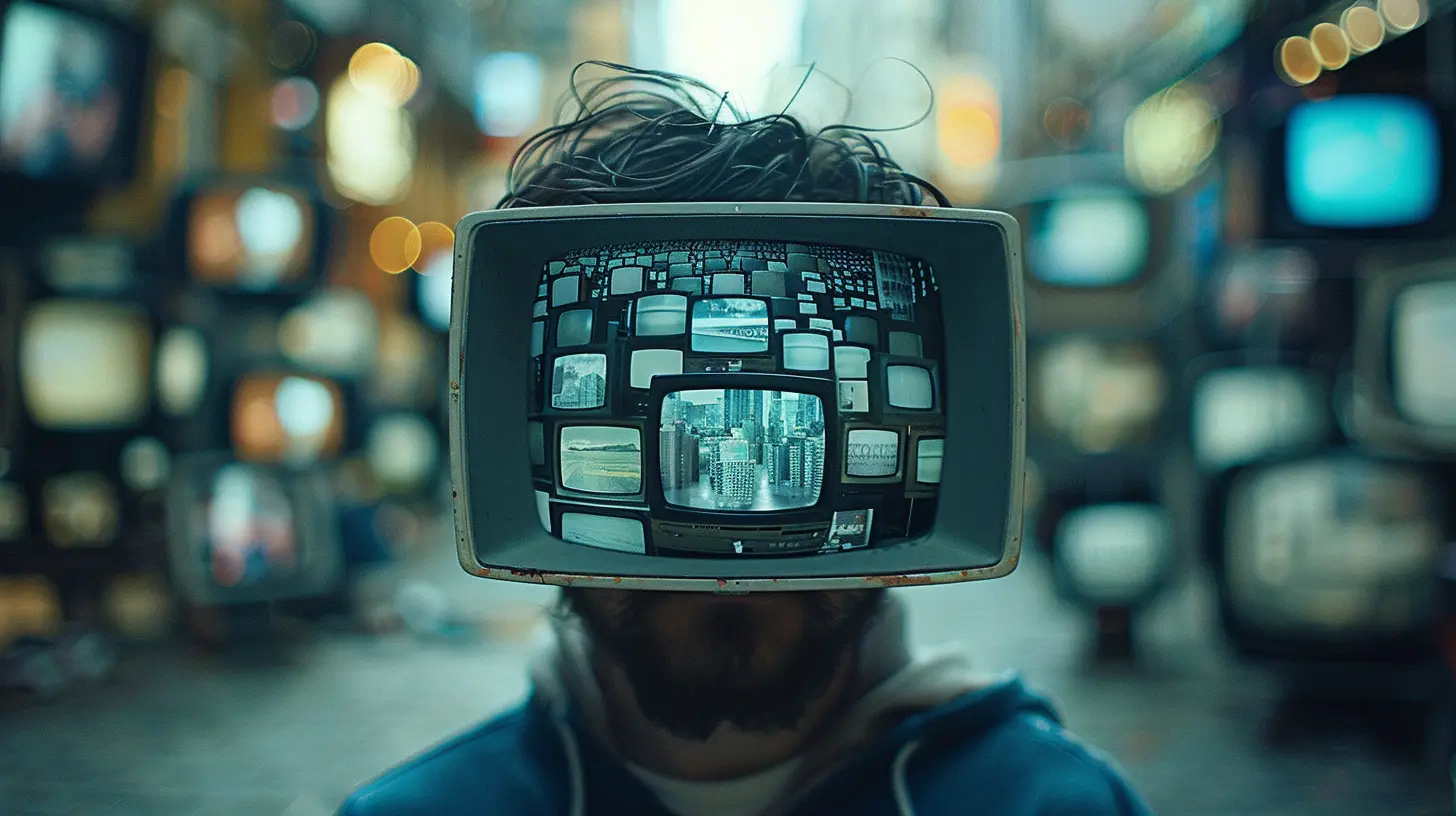The Influence of Advertising on Media Consumption
13 December 2024
In a world where we are constantly bombarded with information, advertisements have become an integral part of our daily media consumption. Whether you’re scrolling through Instagram, watching YouTube, or even listening to your favorite podcast, you’re bound to encounter ads. But have you ever stopped to think about how much these ads are influencing the way you consume media? It’s more profound than you might realize.
Advertising has evolved over the years from simple print ads to sophisticated algorithms that can predict what we want before we even know it ourselves. But what does this mean for the way we engage with media? Are we making choices based on our preferences, or are advertisers guiding our consumption habits?
Let's dive into the fascinating world of advertising and explore how it shapes the way we consume media.

Advertising: More Than Just Commercial Breaks
When we think of advertising, most of us probably envision TV commercials interrupting our favorite shows or banner ads cluttering up our web pages. But advertising is so much more than that. It’s everywhere.From product placement in movies to sponsored posts on social media, advertising has integrated itself seamlessly into the content we consume. It’s no longer a distraction — it’s part of the experience. And that’s exactly what advertisers want.
But why is advertising so prevalent? Well, media companies need revenue to create content, and advertising provides a significant chunk of that income. So, in exchange for consuming media, we "pay" by watching ads. It’s a trade-off most of us have grown accustomed to, even if we don't always love it.
The Rise of Digital Advertising
Before the internet, advertising was fairly straightforward. You’d see an ad in a magazine or during a TV show, and that was that. But digital advertising has changed the game.With the rise of the internet, advertisers now have access to a whole new level of data. They know what websites we visit, what products we’re interested in, and even how long we spend looking at a particular ad. This allows them to target their ads more effectively than ever before.
You may have noticed this yourself. Ever searched for a pair of shoes online, only to see ads for those exact shoes pop up on Facebook, Instagram, or even in your email inbox? That’s targeted advertising in action.
This form of advertising is highly effective because it’s tailored to our individual preferences. The more we engage with media, the more data advertisers gather, and the more "relevant" ads we see. But this also raises questions about privacy and how much control we really have over the media we consume.

How Advertising Shapes Our Media Choices
Advertising doesn’t just influence what we buy; it also influences how we consume media. Think about it. Why do we watch certain TV shows, follow specific influencers, or listen to particular podcasts? More often than not, the content we engage with is heavily influenced by advertising.Content Creation Driven by Ads
Many content creators rely on advertising to fund their work. YouTubers, bloggers, and even major news outlets generate revenue through ads. As a result, they often tailor their content to attract advertisers. This can lead to a kind of self-censorship, where creators shy away from controversial topics or edgy content that might scare away potential sponsors.For example, a YouTuber might avoid discussing political issues because they know it could lead to demonetization — a fancy word for losing ad revenue. On the flip side, some creators might focus on topics that are more likely to attract high-paying advertisers, such as beauty, fitness, or tech, even if those aren’t their genuine interests.
In this sense, advertising has a direct impact on the type of content we see. It shapes not only what creators produce but also what we, as consumers, are exposed to.
The Role of Algorithms
Algorithms play a huge role in media consumption today, and they are heavily influenced by advertising. Platforms like YouTube, Facebook, and TikTok use algorithms to determine which content you see based on your past behavior. These algorithms are designed to keep you engaged for as long as possible, and one of the ways they do this is by serving you ads that are relevant to your interests.But here’s the catch: the more time you spend on these platforms, the more ads you see. It’s a vicious cycle. The algorithms are programmed to show you content that will keep you scrolling, watching, or listening, all while slipping in more and more ads.
In this way, advertising isn’t just influencing the content we consume. It’s influencing how much media we consume, too.

The Psychological Impact of Advertising
Advertising works because it taps into our psychology. It doesn’t just tell us what to buy; it tells us what to believe, how to feel, and even who we should aspire to be. And when it comes to media consumption, advertising plays on our emotions to keep us engaged.FOMO (Fear of Missing Out)
One of the most common tactics advertisers use is to create a sense of urgency or fear of missing out (FOMO). Ever seen an ad for a limited-time offer or a flash sale? That’s FOMO in action. It’s designed to make you feel like if you don’t act now, you’ll miss out on something amazing.This same principle applies to media consumption. Advertisers and content creators often use FOMO to keep you coming back for more. Think about Netflix’s autoplay feature or YouTube’s “Up Next” suggestions. These are designed to keep you watching by making you feel like you might miss out on the next big thing if you stop now.
Building Emotional Connections
Another powerful tool advertisers use is emotion. Ads are often designed to make you feel a certain way — happy, sad, nostalgic, or even scared. By tapping into these emotions, advertisers create a connection between you and the product or service they’re promoting.But this emotional manipulation doesn’t just apply to products. It also applies to the media we consume. For example, a news outlet might focus on sensational or emotionally charged stories because they know it will attract more viewers. In this way, advertising influences not only what we watch but also how we feel about the world around us.

The Dark Side of Advertising: Manipulation and Misinformation
While advertising is an essential part of the media ecosystem, it’s not without its downsides. One of the biggest concerns is the potential for manipulation and misinformation.Native Advertising and Sponsored Content
One of the more subtle forms of advertising is native advertising, also known as sponsored content. This is when advertisements are designed to look like regular content. It can be a blog post, an article, or even a video that promotes a product or service, but it’s presented in a way that makes it look like editorial content.The problem with native advertising is that it can be misleading. Consumers might not realize they’re being advertised to, which can lead to a lack of transparency. This can be particularly problematic when it comes to news and media, where the line between objective reporting and sponsored content can become blurred.
The Spread of Misinformation
Another issue is the role advertising plays in spreading misinformation. With the rise of social media, it has become easier than ever for false information to spread. And unfortunately, advertising can play a role in this.For example, some companies or organizations might create ads that promote misleading or outright false information. These ads can then be targeted to specific audiences, creating echo chambers where misinformation is amplified. This has serious implications for media consumption, as it can lead to a distorted view of reality.
The Future of Advertising in Media Consumption
As technology continues to evolve, so too will advertising. We’re already seeing the rise of new advertising formats, such as augmented reality (AR) ads and virtual influencers. These innovations will likely continue to blur the lines between content and advertising, making it even harder to tell where one ends and the other begins.One thing is certain: advertising will continue to play a major role in shaping the media landscape. Whether it’s through targeted ads, sponsored content, or algorithm-driven recommendations, advertising will continue to influence what we watch, read, and listen to.
The Role of Consumer Awareness
As consumers, it’s important that we remain aware of the role advertising plays in our media consumption. While it’s impossible to avoid ads altogether, we can become more discerning about the content we engage with. By questioning the motives behind the media we consume and being mindful of the influence of advertising, we can make more informed choices.At the end of the day, advertising is a powerful tool that shapes not only what we buy but also how we see the world. It’s up to us to decide how much influence we’re willing to let it have.
all images in this post were generated using AI tools
Category:
Media LiteracyAuthor:

Madeleine Newton
Discussion
rate this article
18 comments
Beth Kline
This article effectively highlights how advertising shapes our media consumption habits. It's a critical reminder of the persuasive power of ads and the need for media literacy. Understanding this influence is essential for making informed choices about what we watch and engage with daily.
February 20, 2025 at 4:19 AM

Madeleine Newton
Thank you for your insightful comment! I'm glad you found the article valuable in emphasizing the importance of media literacy in navigating advertising's influence.
Bernadette Sweeney
This article provides valuable insights into the profound impact of advertising on media habits. Understanding this relationship is essential for both consumers and content creators alike.
February 1, 2025 at 12:37 PM

Madeleine Newton
Thank you for your feedback! I'm glad you found the insights valuable for both consumers and content creators.
Yasmeen Clark
Advertising shapes our media landscape, but remember, we hold the power to choose our consumption. Let’s embrace mindful engagement, seeking content that inspires and enriches our lives. Together, we can cultivate a more positive media experience!
January 29, 2025 at 5:40 AM

Madeleine Newton
Thank you for your insightful comment! I completely agree—mindful engagement is essential in navigating the media landscape. Let's prioritize content that truly enriches our lives.
Candace McKinstry
This article effectively highlights the symbiotic relationship between advertising and media consumption, revealing how marketing shapes viewer preferences and behaviors.
January 24, 2025 at 5:08 AM

Madeleine Newton
Thank you for your insightful comment! I'm glad you found the article effective in highlighting this important relationship.
Brittany Sullivan
Advertising shapes our media choices more than we realize, driving consumption patterns and influencing societal norms in profound ways.
January 17, 2025 at 1:11 PM

Madeleine Newton
Thank you for your insightful comment! Indeed, advertising plays a crucial role in shaping not only our media choices but also broader societal trends. Understanding this influence is key to navigating our consumption habits.
Ronan Chapman
Great insights! It's fascinating how ads shape our media choices without us even realizing it.
January 12, 2025 at 3:56 AM

Madeleine Newton
Thank you! Ads definitely play a powerful, often subconscious role in our media choices. I'm glad you found the insights intriguing!
Valentina Bell
Advertising significantly shapes media consumption patterns, driving audience engagement and preferences while affecting content production and distribution strategies across various platforms.
January 4, 2025 at 9:42 PM

Madeleine Newton
Thank you for your insightful comment! Indeed, advertising plays a crucial role in shaping both audience behavior and the broader media landscape.
Colt McKinstry
Advertising shapes our choices in unseen ways—are we the masters of our media, or merely puppets?
December 30, 2024 at 12:41 PM

Madeleine Newton
Advertising undeniably influences our choices, often subtly guiding our preferences. While we can strive to be conscious consumers, it's essential to recognize that we are often swayed by these unseen forces. Striking a balance between awareness and autonomy is crucial.
Zaren Beck
Advertising shapes not only consumer choices but also the media landscape itself. Understanding its influence encourages critical thinking, empowering individuals to navigate content more mindfully. Recognizing this interplay can enhance media literacy and foster more informed, discerning audiences.
December 27, 2024 at 11:53 AM

Madeleine Newton
Thank you for your insightful comment! I completely agree that understanding advertising's influence is crucial for enhancing media literacy and empowering consumers. Your points highlight the importance of critical thinking in navigating today's complex media landscape.
Theodore Sullivan
This article adeptly highlights the profound impact of advertising on our media habits. It emphasizes how targeted ads shape our content choices, often prioritizing commercial interests over genuine engagement. Understanding this influence is crucial for fostering critical media consumption skills among audiences today. Great read!
December 23, 2024 at 7:46 PM

Madeleine Newton
Thank you for your thoughtful response! I'm glad you found the article insightful in addressing the influence of advertising on our media habits. Your emphasis on fostering critical media consumption skills is especially important.
Allegra McLaurin
Thank you for shedding light on the complex relationship between advertising and our media consumption. It’s essential to recognize how these influences shape our perceptions and choices. Your insights remind us to approach media mindfully, fostering a greater awareness of the messages we engage with every day. Keep sharing this important knowledge!
December 20, 2024 at 5:35 AM

Madeleine Newton
Thank you for your thoughtful comment! I'm glad you found the insights valuable—mindful media consumption is indeed crucial.
Rhiannon Maddox
Like a cat chasing a laser pointer, our media consumption dances to the whims of advertising! They lure us in with promises of shiny things while we scroll, snack, and occasionally ponder why we need 17 types of toothpaste. 🐱✨
December 16, 2024 at 7:48 PM

Madeleine Newton
Thank you for your insightful comment! It's true—advertising skillfully grips our attention, often leading us to question our own choices amid a sea of options. Your cat analogy perfectly highlights the playful yet sometimes bewildering nature of our media habits! 🐾✨
Ariana Cantu
This article effectively highlights how advertising shapes our media choices. It’s crucial to be aware of these influences, as they impact not only our preferences but also our critical thinking.
December 16, 2024 at 3:36 AM

Madeleine Newton
Thank you for your insightful comment! I'm glad you found the article valuable in highlighting the importance of recognizing advertising's impact on our media choices and critical thinking.
Owen Carter
Insightful perspectives, thank you!
December 15, 2024 at 11:46 AM

Madeleine Newton
Thank you for your kind words! I'm glad you found the perspectives valuable.
Payton Baker
Great insights! This article beautifully highlights how advertising shapes our media choices and experiences.
December 15, 2024 at 4:41 AM

Madeleine Newton
Thank you! I'm glad you found the insights valuable. Advertising indeed plays a crucial role in shaping our media landscape!
Reese Castillo
This article sheds light on the significant role advertising plays in shaping our media choices. Understanding these influences empowers us to make more informed decisions about what we consume. Great insights! Keep exploring!
December 14, 2024 at 4:38 AM

Madeleine Newton
Thank you for your thoughtful comment! I'm glad you found the insights valuable. Understanding these influences is key to being more informed media consumers. Appreciate your support!
Maddox McInnes
Advertising shapes media choices; awareness is key for informed consumption.
December 13, 2024 at 9:25 PM

Madeleine Newton
Thank you for your insight! You're right—awareness plays a crucial role in how advertising influences our media choices, enabling more informed consumption decisions.
Iris McAndrews
This article offers insightful perspectives on the complex relationship between advertising and media consumption. It effectively highlights how advertising shapes audience behavior and preferences, emphasizing the importance of critical media literacy in navigating today's advertising landscape. Great read!
December 13, 2024 at 12:38 PM

Madeleine Newton
Thank you for your thoughtful feedback! I'm glad you found the article insightful and relevant to understanding the dynamics of advertising and media consumption.
MORE POSTS

The Influence of Parental Involvement on Academic Success

Addressing Trauma in the Classroom: What Teachers Need to Know

Media Literacy and the Future of Journalism

The Impact of Nutrition on Your Study Performance

The Impact of Research on Early Childhood Education

Unlocking the Power of Critical Thinking for Lifelong Learning

Essential Strategies for Solving Word Problems

Time Management for Students: Balancing Study and Life

How School Funding Affects Extracurricular Activities and Sports

Choosing the Right Online Program for Your Career Goals

Study Habits of Top Students: What You Can Learn and Apply